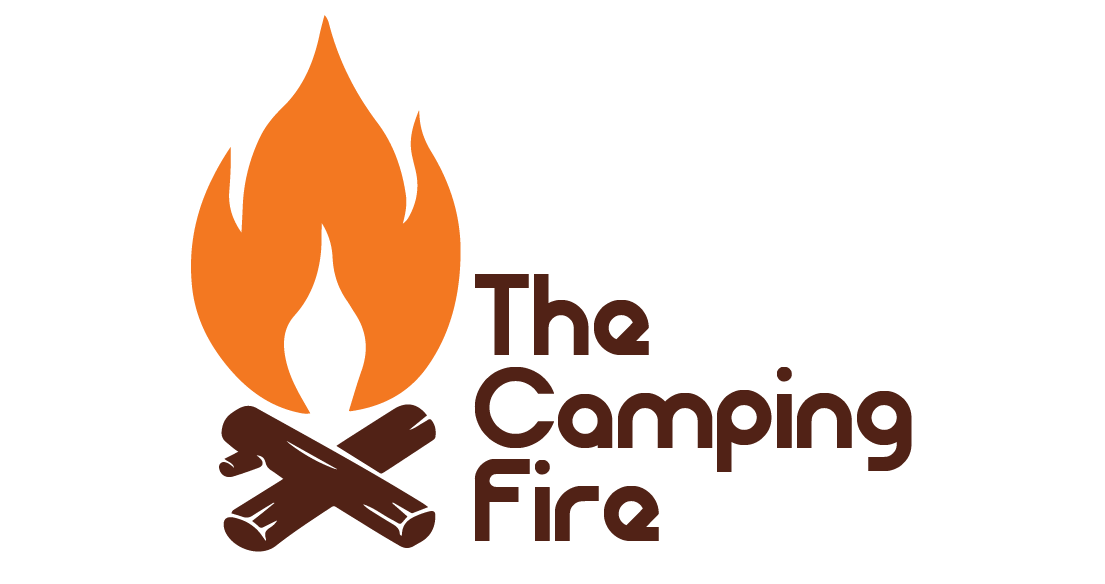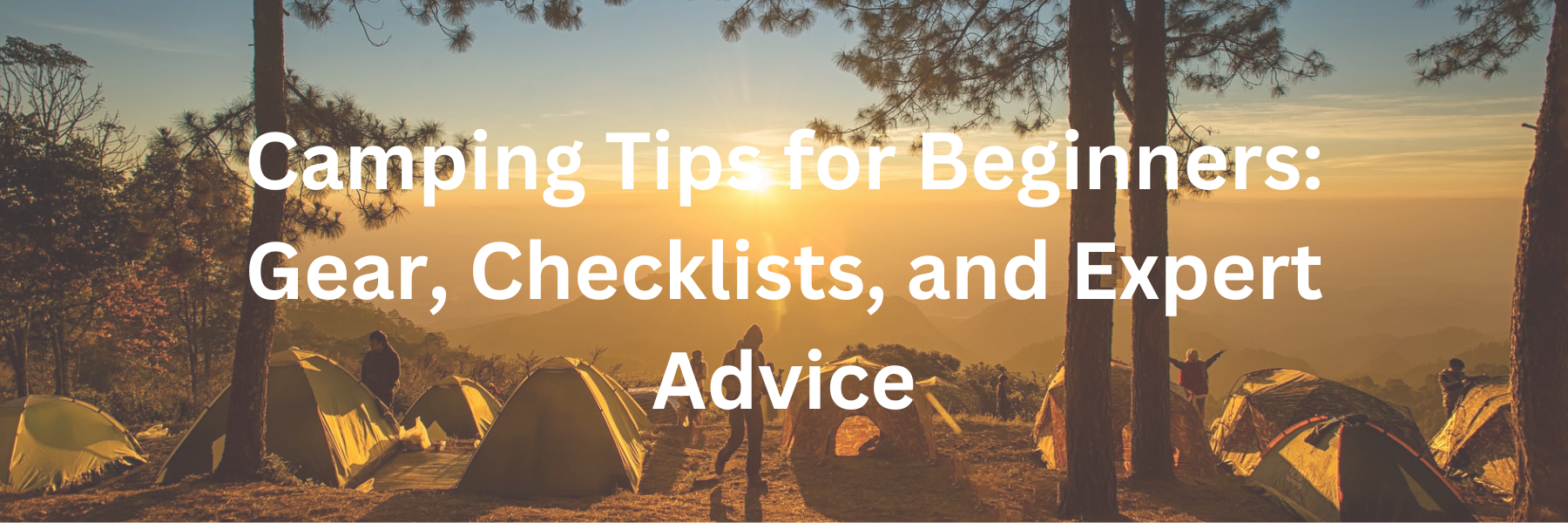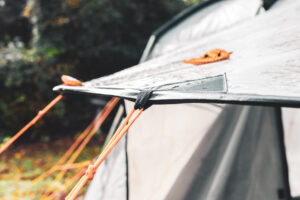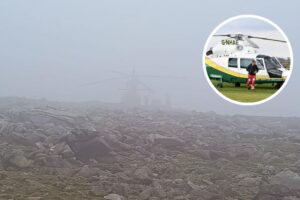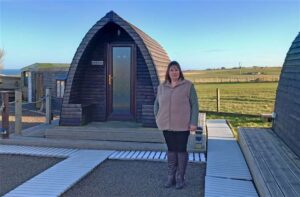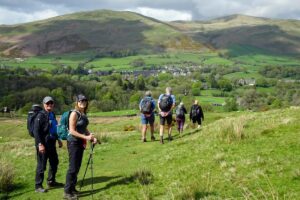Embarking on your first camping adventure? Prepare to immerse yourself in nature’s calming tranquillity while forging memories to last a lifetime. But before you dive into the world of campfires and starry nights, our comprehensive guide on ‘Camping for Beginners’ is an essential read. Filled with practical gear recommendations, foolproof checklists, and expert advice, it ensures you’re equipped to tackle any camping expeditions confidently. Whether you’re venturing solo or planning a family getaway, allow us to transform your outdoor experience from overwhelming to exhilarating!
If you’re new to camping, here are some essential tips to get started: begin with easy day trips or renting a cabin before purchasing gear, start small and close to home in case of issues, borrow or rent gear to save money, focus on essential gear (tent, sleeping bag, sleeping pad, lighting, stove), bring appropriate clothing and plenty of food, follow Leave No Trace principles to minimise your impact on the environment. Remember to plan ahead and always familiarise yourself with the rules of where you’ll be camping.
Gathering Your Camping Essentials
Before embarking on your camping adventure, it’s crucial to gather all the essential items that will make your trip safe, comfortable, and enjoyable. When it comes to camping gear, it’s important to strike a balance between convenience and necessity. While having all the latest gadgets may seem appealing, overpacking can weigh you down and create unnecessary chaos at your campsite.
One of the most important elements of a successful camping trip is a sturdy and reliable tent. Consider the size of your group and choose a tent that provides enough space for everyone to sleep comfortably. The North Face Wawona 6 is ranked as the best camping tent for 2023, with its spacious interior that sleeps up to six people. Its massive front vestibule offers ample storage space for your gear while providing extra protection from the elements.
In addition to a tent, a high-quality sleeping bag and mattress are essential for a good night’s sleep in the great outdoors. The REI Co-op Siesta Hooded 20 is chosen as the best camping sleeping bag, offering a roomy rectangular shape with a hood for added warmth. Pair it with the Therm-a-Rest MondoKing 3D, rated as the best camping mattress, featuring four inches of loft and vertical sidewalls for maximum comfort.
Other crucial camping essentials include cooking equipment such as a stove and utensils, food storage options like coolers or backpack coolers, lighting sources such as lanterns or headlamps, and clothing appropriate for various weather conditions. Although there are many recommended options available in each category, it’s important to choose gear that suits your specific needs and preferences.
Now that we have covered gathering your camping essentials, let’s move on to creating a quick-start camping gear checklist to ensure you have everything you need for your outdoor adventure.
Quick-Start Camping Gear Checklist
To help you get started on your camping journey, we have put together a quick-start camping gear checklist. This checklist includes the essential items that every beginner camper should consider packing. Keep in mind that this is a general guide, and you may need to adjust it based on specific factors like location, duration of the trip, and personal preferences.
- Tent: Choose a tent suitable for the size of your group and weather conditions.
- Sleeping bag: Opt for a sleeping bag with appropriate temperature rating for the expected climate.
- Camping mattress or sleeping pad: Ensure you have a comfortable surface to sleep on.
- Cooking equipment: Pack a portable stove, pots and pans, cooking utensils, and plates/cutlery.
- Food and water: Bring non-perishable food items, snacks, and plenty of water.
- Lighting: Carry multiple light sources such as lanterns or headlamps for visibility at night.
- Clothing: Pack layers of clothing suitable for different weather conditions.
- Personal items: Don’t forget essentials like toiletries, sunscreen, insect repellent, and a first aid kit.
- Camping chairs and table: Consider bringing compact chairs and a portable table for comfort at the campsite.
- Miscellaneous items: Remember to pack things like a camping knife, matches/lighter, binoculars, maps/compass, and entertainment options like books or games.
For example, if you’re heading to a campground with designated fire pits for cooking, you may not need to bring a stove. Similarly, if you’re visiting an area known for its mosquitos or ticks, it’s important to prioritise insect repellent and appropriate clothing.
By using this quick-start camping gear checklist as your foundation, you can ensure that you have all the necessary items for a successful camping trip while avoiding overpacking unnecessary equipment.
- For a successful camping trip, beginners should consider packing essential items such as a suitable tent, sleeping bag, cooking equipment, food and water, lighting, clothing, personal items, camping chairs and table, and miscellaneous items. It is important to adjust the checklist based on specific factors of the location, duration of the trip and personal preferences to avoid unnecessary overpacking.
Building Camping Skills for Newbies
Camping is a wonderful way to connect with nature and embark on exciting adventures. However, if you’re new to camping, it’s important to start building your camping skills gradually and confidently. Here are some essential tips that will help you become a seasoned camper in no time.
Start with Day Trips or Renting a Caravan: Before investing in camping gear, it’s a good idea to start with day trips into the countryside or even renting a caravan. This will give you a taste of outdoor living and allow you to gauge your level of comfort and interest in camping. While I love camping and spending time outdoors, I understand this isn’t for everyone.
Consider Ease of Access to Facilities: When choosing campsites for your camping expeditions, consider the ease of access to bathrooms and running water. Beginner campers may find it more convenient to have these facilities nearby until they gain confidence in handling more remote locations. Also stay local – if you don’t like it the drive home isn’t that far. Check out Camping sites in Britain campsite finder to find a site local to you.
Now that we’ve covered the basics of building camping skills for newcomers, let’s move on to understanding local wildlife and environment – an important aspect of camping safety and enjoyment.
Understanding Local Wildlife and Environment
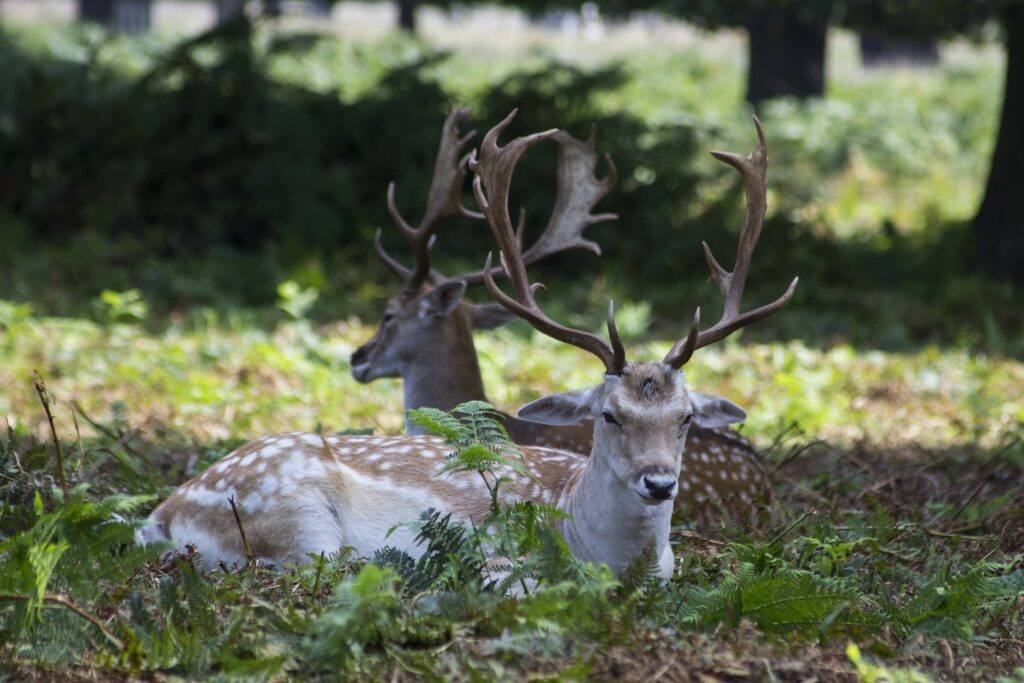
When venturing into the great outdoors, it’s crucial to have an understanding of the local wildlife and environment. This knowledge will not only enhance your camping experience but also ensure your safety during your outdoor adventures.
Research Local Wildlife: Before setting out on your camping trip, take some time to research the types of wildlife that inhabit the area. Unlike camping in say America, we don’t really need to familiarise ourself with any potentially harmful animals such as bears or snakes. While we do have a few snakes in the UK. The adder is the UK’s biggest venomous animal, but they are rarely a threat to people or dogs.
Respect Wildlife Habitat: As you enjoy the beauty of nature, remember to respect the wildlife habitat by keeping a safe distance and refraining from feeding or approaching animals. This helps maintain the balance of the ecosystem and keeps both you and the animals safe.
Leave No Trace Principles: Following Leave No Trace principles is crucial in preserving the natural environment for future generations of campers. These principles include packing out your trash, minimising your impact on vegetation and soil, respecting water sources, and being considerate of other campers.
By understanding local wildlife and environment, you will be better equipped to make informed decisions during your camping trips and ensure an enjoyable and safe experience for yourself and the ecosystem around you.
Weather Preparations and Safety Measures

When venturing into the great outdoors, it’s crucial to be prepared for various weather conditions and prioritise safety at all times.
Imagine this scenario: You decide to go camping during the early summer months in a picturesque forest. The forecast predicts clear skies and warm temperatures. However, as evening approaches, dark clouds roll in, thunder rumbles, and rain begins to pour. Without proper preparations, what should have been an enjoyable experience might turn into a dangerous situation. Only just a few weeks ago I experienced this when camping at the start of the school holidays and we got a months rain in 48 hours.
First and foremost, staying informed about the weather forecast is essential. Make use of reliable sources such as the National Oceanic and Atmospheric Administration (NOAA), weather apps on your mobile device, or local news channels to receive regular updates about any potential changes.
Beyond staying informed, there are several other important weather preparations and safety measures to consider:
- Thunderstorm Safety: Thunderstorms can bring lightning strikes, strong winds, heavy rain, and flash floods. When a thunderstorm is approaching, seek shelter in a sturdy building or a hardtop vehicle rather than remaining outside or taking refuge under trees or metal structures. If you’re already camping when a storm hits, retreat to your tent and wait it out while keeping an eye on any potential flooding. But a tent should be the last resort, car, toilet block etc all before a tent.
- Outdoor Weather Safety: Regardless of the season, always pack appropriate clothing layers for varying temperature changes throughout the day and night. Additionally, bring items such as sun protection (hats, sunscreen), insect repellent, and ample water supply to stay hydrated.
- Flooding Safety: Camping near bodies of water, such as rivers or lakes, can pose a risk of flash flooding during heavy rain. It’s imperative to choose your campsite wisely and ensure it is on higher ground away from potential flood zones. If a flash flood warning is issued, immediately move to higher ground and never attempt to cross flooded areas.
Picture yourself camping near a river and being awoken in the middle of the night by rushing water. Having chosen a safe location away from flood-prone areas, you quickly grab your belongings and head to higher ground. Your well-thought-out preparations helped ensure your safety during a potentially dangerous situation.
Remember, taking weather preparations and safety measures seriously can make a significant difference in ensuring an enjoyable and secure camping experience. Now that we understand the importance of being prepared for different weather conditions, let’s explore the essential equipment needed for varying scenarios.
Equipments for Different Weather Conditions
When it comes to camping gear, being well-equipped to tackle different weather conditions is essential.
Consider this scenario: You’re planning a camping trip in the mountains where temperatures tend to drop significantly at night. Without adequate gear for cold weather, your nights might be unbearable and hinder your entire camping experience.
- Tents: Invest in a high-quality tent suitable for various weather conditions. Look for features such as waterproof materials, sturdy construction to withstand strong winds, and proper ventilation to prevent condensation buildup inside.
- Sleeping Bags: Choose sleeping bags with appropriate temperature ratings based on the expected weather conditions. Ensure they provide enough insulation and warmth for colder nights or consider using sleeping bag liners or additional blankets for added comfort.
- Clothing: Pack clothing layers that are suitable for different temperatures and weather conditions. Include moisture-wicking base layers, insulating midlayers, waterproof jackets or raincoats, hats, gloves, and thick socks to keep you comfortable and protected.
- Footwear: Invest in sturdy, waterproof hiking boots to prevent discomfort and potential foot injuries during wet or muddy conditions. Additionally, consider packing extra pairs of socks to keep your feet dry and warm.
- Lighting: Prepare for low light conditions by bringing reliable headlamps or flashlights with extra batteries. These will prove crucial during storms or if you need to navigate around your campsite at night.
- Cooking Equipment: Ensure you have appropriate cookware and stove systems that can withstand windy or rainy conditions. Opt for camping stoves with wind shields and non-perishable food options to ensure you can prepare meals regardless of the weather.
- Rain Gear: Don’t forget to pack lightweight, waterproof rain gear such as rain jackets and pants. These will help keep you dry during unexpected showers and prevent hypothermia in colder temperatures.
By being well-prepared with the right equipment for different weather conditions, you can enjoy your camping trip regardless of what Mother Nature throws your way.
Now that we have covered various weather preparations and essential equipment, let’s move on to embracing nature and exploring outdoor activities while camping.
Embracing Nature and Outdoor Activities
There is something magical about stepping away from the hustle and bustle of city life and immersing oneself in the beauty of nature. Embracing outdoor activities allows us to reconnect with the natural world, rejuvenate our spirits, and discover new passions. Whether you are a camping novice or have some experience under your belt, getting out into nature can be an invigorating and fulfilling experience.
When we embrace nature, we open ourselves up to a multitude of outdoor activities that cater to different interests and skill levels. For those seeking tranquillity and serenity, hiking through lush forests or along scenic trails can provide a much-needed escape from everyday stress. Imagine breathing in the crisp mountain air as you make your way towards a breathtaking summit, rewarded by panoramic views that take your breath away.
If you crave a bit more thrill and excitement, consider trying rock climbing or bouldering. These activities challenge both your mental and physical abilities as you navigate vertical walls or scramble over large rocks. The sense of accomplishment you feel when reaching the top is unparalleled, filling you with a surge of confidence and adrenaline.
Another way to embrace nature is by taking up water-based activities such as kayaking or canoeing. Gliding across calm waters can be incredibly peaceful, offering a unique perspective of your surroundings. From tranquil lakes to winding rivers, exploring these bodies of water allows you to witness wildlife up close and truly appreciate the wonders of the natural world.
Of course, embracing nature doesn’t always have to involve high-intensity activities. Sometimes, the simple act of spending time outdoors in a serene setting can bring immense joy. Whether it’s setting up a hammock between two tall trees and reading a book, having a picnic by a tranquil pond, or stargazing on a clear night, there is something truly special about immersing yourself in the beauty of nature.
With the excitement of embracing nature, let’s now explore some fun yet safe outdoor adventures specifically tailored for beginners.
Fun yet Safe Outdoor Adventures for Beginners
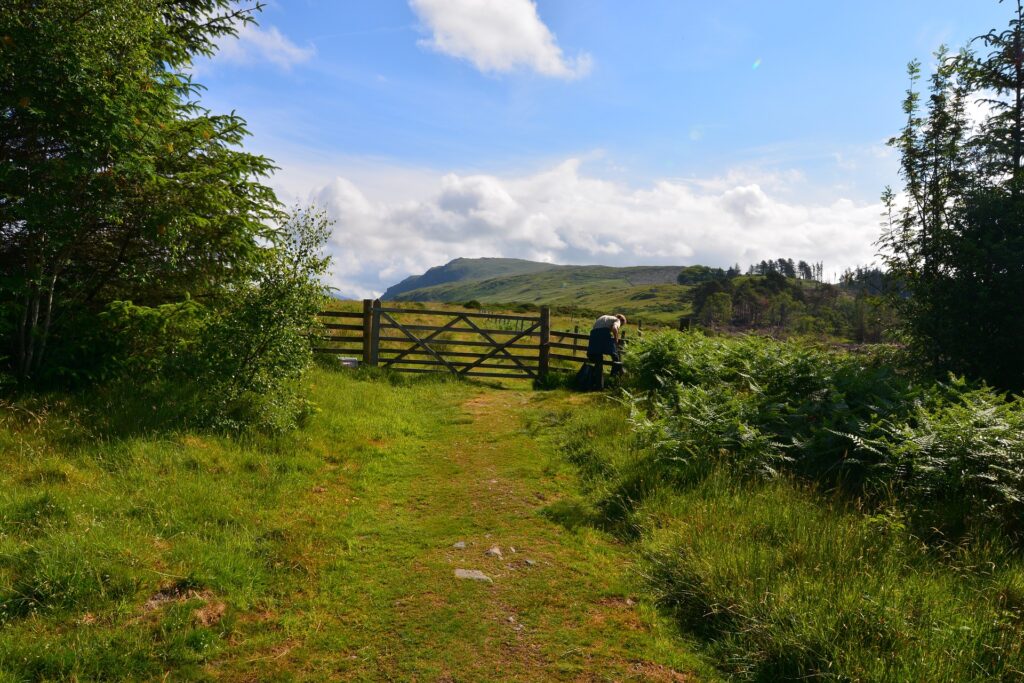
Embarking on outdoor adventures as a beginner can be both thrilling and intimidating. It’s important to choose activities that align with your comfort level while ensuring safety remains a top priority. Here are some suggestions for fun and safe outdoor experiences to kickstart your journey:
- Day Hiking: Start by exploring nearby trails or nature preserves during daylight hours. Choose well-marked paths of manageable distance and elevation. This will allow you to build stamina while enjoying the beauty of nature in a relatively controlled environment.
- Car Camping: If spending a night under the stars sounds appealing, car camping is an excellent option for beginners. Choose a campground with amenities such as bathrooms and running water, and bring along essential camping gear like a tent, sleeping bag, and cooking supplies. This way, you can experience the joys of camping without having to venture too far from civilisation.
- Nature Photography: Capture the beauty of the great outdoors through photography. Invest in a camera or simply use your smartphone to document the unique sights and scenes you encounter along your path. Not only does this activity encourage you to slow down and appreciate your surroundings, but it also allows you to share your experiences with others.
- Fishing: Cast your line into calm waters, enjoy the soothing sounds of nature, and wait patiently for a bite. Fishing can be a relaxing activity that brings you closer to nature while providing a sense of accomplishment when you reel in your first catch.
These are just a few examples of beginner-friendly activities that allow you to have fun and explore the outdoors safely. Remember, everyone has their own definition of adventure, so find what sparks joy and curiosity within you. The possibilities are endless, and the natural world is waiting to be discovered.
Andy Halliday is a passionate outdoor enthusiast and an avid camper. He has been exploring the wilderness and camping in the great outdoors for over two decades, and his experiences have inspired him to write about the joys of camping and the beauty of nature.
As a camping enthusiast, he believes that spending time in the wilderness is not just a way to escape the daily grind, but also a way to connect with nature and gain a deeper appreciation for the natural world. Andy has camped in various locations across the country and on two different continents. He has a wealth of knowledge and experience to share with fellow campers.
Through his writing, he hopes to inspire you to venture out into the wilderness and experience the beauty and serenity of camping. Andy articles and guides provide useful tips, advice, and insights on everything from selecting the right gear and equipment to finding the best campsites and hiking trails.
